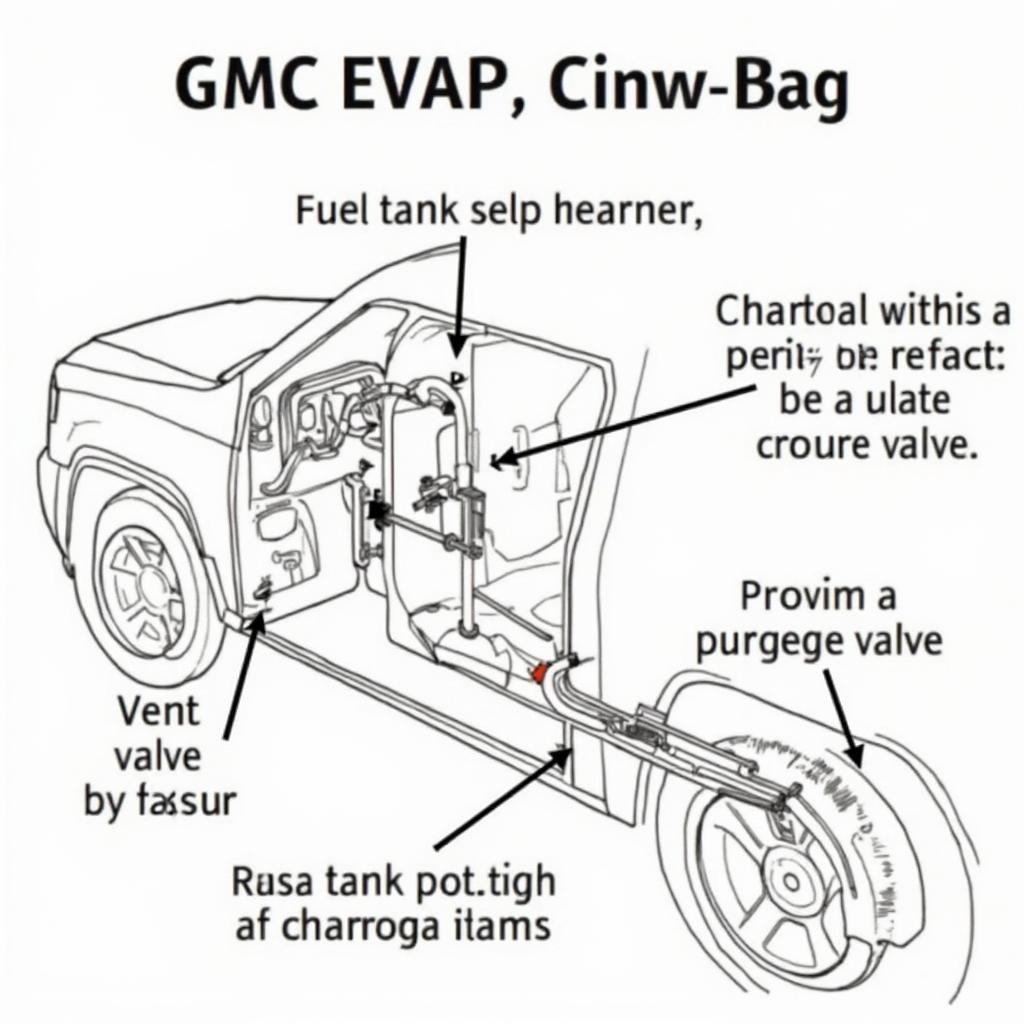You’re cruising down the road in your GMC Yukon, enjoying the ride, when suddenly the check engine light pops on. A quick trip to the auto parts store or a scan with your own OBD2 reader reveals the culprit: code P0455. This code indicates a problem with your vehicle’s Evaporative Emission Control (EVAP) system, specifically a large leak. But what does that mean, and how serious is it?
This comprehensive guide delves into the intricacies of OBD2 code P0455, specifically focusing on its manifestation in GMC Yukon models. We’ll demystify the EVAP system, explore the common causes behind this code, and provide you with actionable steps to diagnose and resolve the issue.
What Does OBD2 Code P0455 Mean?
In simple terms, code P0455 means your GMC Yukon’s engine control module (ECM) has detected a large leak in the EVAP system. This system plays a crucial role in preventing fuel vapors from escaping into the atmosphere. It achieves this by capturing these vapors in a sealed system and purging them into the engine for combustion.
 GMC Yukon EVAP System Diagram
GMC Yukon EVAP System Diagram
Common Causes of P0455 in GMC Yukons
While a large leak might sound intimidating, the good news is that it’s often caused by simple issues. Here are the most common culprits behind P0455 in GMC Yukons:
-
Loose or Damaged Gas Cap: This is the most frequent and easiest-to-fix cause. A loose, cracked, or missing gas cap disrupts the EVAP system’s sealed environment, triggering the code.
-
Faulty Vent Solenoid: The vent solenoid regulates the flow of vapors within the EVAP system. If it malfunctions, it can lead to pressure imbalances, resulting in leaks.
-
Damaged EVAP Lines or Hoses: Over time, the EVAP system’s hoses and lines can become cracked, brittle, or disconnected due to wear and tear, leading to leaks.
-
Faulty Purge Solenoid: Similar to the vent solenoid, a malfunctioning purge solenoid, which controls the flow of vapors into the engine, can disrupt the EVAP system’s pressure balance.
-
Damaged Charcoal Canister: This canister stores fuel vapors before they are purged into the engine. A cracked or saturated canister can trigger the P0455 code.
Diagnosing OBD2 Code P0455
Before you start replacing parts, it’s crucial to diagnose the problem accurately. Here’s a step-by-step approach:
-
Check the Gas Cap: Start with the easiest fix. Ensure the gas cap is securely tightened. If it’s damaged, replace it with a new one.
-
Visual Inspection: Visually inspect all the EVAP components, including the hoses, lines, and connections, for any signs of damage, cracks, or disconnections. Pay close attention to areas around the gas tank, charcoal canister, and engine bay.
-
Smoke Test: If the visual inspection doesn’t reveal the leak, a smoke test is a highly effective method. This involves injecting non-toxic smoke into the EVAP system to pinpoint the location of the leak.
-
Test the Solenoids: Using a multimeter, you can test the functionality of both the vent and purge solenoids. Refer to your GMC Yukon’s repair manual for specific resistance values.
-
Inspect the Charcoal Canister: While not as common, a faulty charcoal canister can also trigger the code. Check for any signs of physical damage or clogging.
What Happens if I Ignore Code P0455?
While a P0455 code might seem like a minor inconvenience, ignoring it can lead to more significant problems down the road:
-
Increased Emissions: A malfunctioning EVAP system releases harmful fuel vapors into the atmosphere, contributing to air pollution.
-
Fuel Economy Issues: A leak in the EVAP system can disrupt the air-fuel mixture in the engine, potentially leading to reduced fuel efficiency.
-
Further Damage: Ignoring the problem can exacerbate existing issues and potentially damage other engine components, leading to more costly repairs.
Conclusion
Addressing OBD2 code P0455 in your GMC Yukon is crucial for ensuring optimal vehicle performance, complying with environmental regulations, and preventing potential future issues. By following the diagnostic steps outlined above, you can pinpoint the cause of the problem and take appropriate action.
Remember, a well-maintained EVAP system keeps your GMC Yukon running smoothly and efficiently for years to come.
FAQs about OBD2 Code P0455
1. Can I still drive my GMC Yukon with a P0455 code?
While you might be able to drive for a short distance, it’s best to address the problem as soon as possible to prevent further damage and potential safety hazards.
2. How much does it cost to fix a P0455 code?
The cost of repair varies significantly depending on the cause and severity of the leak. A simple gas cap replacement can be inexpensive, while repairs involving solenoids or the charcoal canister can be more costly.
3. Can I fix a P0455 code myself?
If you’re comfortable with basic car maintenance, you can certainly attempt some of the diagnostic steps and simpler fixes, such as replacing the gas cap or inspecting the hoses. However, more complex repairs might require the expertise of a qualified mechanic.
4. How often should I check my EVAP system?
It’s a good practice to have your EVAP system inspected by a mechanic at least once a year or as part of your regular vehicle maintenance schedule.

